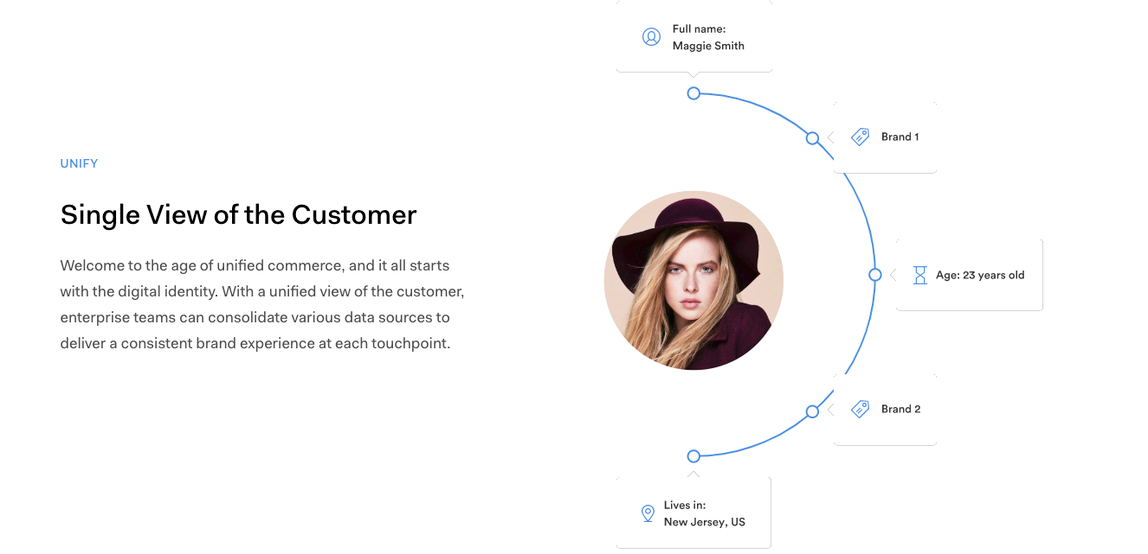It wasn’t long ago that showrooming — the tendency of customers to examine a product in a store and then go online to compare prices and make the actual purchase — was considered one of the four horsemen of the so-called retail apocalypse.
However, in recent years, savvy retailers have learned how to use showrooming to increase revenue. More and more success stories feature traditional retailers aligning their digital and brick-and-mortar operations, so each drives sales for the other. Instead of driving customers away, they’re building brand loyalty by creating tailor-made experiences online and in person.
Historically, retailers found showrooming so damaging and difficult to counteract because customers engaged in their browsing anonymously. Retailers had no way of understanding their customers’ behavior or of appealing to them once they left the store. This lack of shared customer data robbed retailers of the ability to leverage their unique advantages against e-commerce competitors. Now, however, more CTOs are recognizing that smart identity management is the key to keeping customers within the sales funnel, regardless of where they make a purchase. Below, we’ll discuss how to implement an approach to identity that helps your digital and physical stores feed into each other’s operations and drive revenue growth.
Create a Single View of the Customer
If you want to turn showrooming to your advantage, you have to create a seamless customer experience across all touchpoints, thereby providing a more compelling, personalized environment than online price-shopping. Designing this experience first requires a comprehensive understanding of your customer.
Implementing social login across all your digital channels is a simple, efficient way to build a rich user profile. Social login confers several advantages, the first being that its simplicity increases the likelihood that customers will sign in since they don’t have to create a new set of credentials for your site.
Of course, customers who use social login then share a wealth of information about their attributes, interests, and location. Armed with this information, you can send more tailored and helpful recommendations their way—as well as guide customers back to your physical retail store. Social login is also crucial in creating the same experience across all digital touchpoints since their profile will be consistent regardless of where they sign in.
Building data-rich user profiles is only half the battle, though. That data can’t do anything to hang on to showrooming customers if it’s siloed on your digital storefront. To fully align your operations, it’s critical to integrate identity management with your existing CRM.
Auth0’s platform integrates with any CMS, analytics, or e-commerce platform, including Microsoft CRM and Salesforce. Integrating identity management with your existing SaaS tools enables you to share this single view of the customer with the systems that can put it to best use. For example, using geofencing with your CRM can alert you to a customer browsing a store, with no need for login. Your sales team is now alerted and empowered by easy access to a customer’s profile. In some cases, you can even write a customized rule that if a customer enters and exits the store without purchasing, the CRM automatically alerts your digital marketing team to follow up with them.
The surgical precision of such a method is exactly the type of digital initiative that retail CTOs can get excited about; it’s not tech for tech’s sake, but a data-driven means of patching a revenue leak. Integrating customer data across channels is both cutting edge and a fairly simple way to streamline operations. When digital and physical stores share a rich and holistic view of the customer, it ensures that they are working collaboratively, not at cross-purposes.
Introduce Endless-Aisle Technology
For a retailer, there’s nothing more disheartening than a customer who comes in search of a popular item, finds that it’s out of stock, and walks away saying, “I guess I’ll just order it on Amazon.” Endless aisle is the solution to this problem.
Endless aisle refers to the practice of providing customers with an in-store digital touchpoint from which they can order an unavailable product and have it shipped to their homes. Implementing endless aisle can be an effective method of wooing customers, even those who walked in only intending to showroom. For example, a touchscreen positioned next to a display can direct a customer to a “special release” version of the product available only through the retailer.
Endless-aisle tech also allows retailers to offer a wider variety of sizes, colors, or styles of any product, without the store having to stock them. It’s a way that CTOs can help achieve leaner inventory management without compromising on customer choice.
The possibilities expand further if you implement social login on your endless-aisle touchpoints since the reduced friction increases the likelihood that customers will actually use it to place an order. Auth0’s easy social login has been demonstrated to improve conversion rates and registration. When a customer logs in — even if they don’t make a purchase — you have a record of the interaction and can follow up with email and targeted ads.
Various retailers have experimented with different approaches to endless aisle, from installing kiosks to setting up tablets to using “beacons” in store aisles to send push notifications directly to a customer’s smartphone. Regardless of which solution makes the most sense for your business, Auth0’s platform is device-agnostic, so using identity to make a purchase is as easy in the store as it is on a mobile app or website.
"Learn about endless-aisle technology and how it can help you woo customers."
Tweet This
Use Customer Data to Facilitate Reverse Showrooming
To fully seize on the revenue-driving potential of showrooming, you shouldn’t treat it as a one-way street, steering customers from brick-and-mortar locations to digital stores. Instead, you can use effective identity management to create a cyclical relationship between touchpoints, playing to the individual strengths of each.
Using your digital presence to encourage customers to show up in person is a phenomenon known as webrooming, or “reverse showrooming.” With your single view of customer identity, you can send personalized email reminders, offers, and targeted ads to drive shoppers to stores.
Certain types of retailers are particularly well-positioned to capitalize on webrooming because their products all but require customers to try them on or sample them in person. Ulta Beauty, for example, credited its in-store sales increase to “incorporating relevant product recommendations and replenishment reminders across digital channels” in what it called a “reverse channel shift.”
Customer data can also drive revenue and cut costs in ways that go beyond traditional marketing initiatives, as in the case of returns. A 2018 CBRE report found that returns comprise 8% of sales for brick-and-mortar retailers, while online shoppers return goods at levels from 15% to 30%. But with effective identity management, you can turn this behavior to your benefit. With well-organized, accessible data, you can direct customers to their local store to return the product they bought online. Not only does this allow for immediate restocking and save on shipping costs, but it also gives you a chance to make another sale once the customer is in the building. It’s just one example of the many creative, often overlooked, yet valuable ways a robust identity management system can allow CTOs to directly contribute to cost savings.
"Learn how webrooming uses your digital presence to encourage customers to show up in person to your store."
Tweet This
You Can Turn Showrooming from a Problem into a Solution
As long as you’re keeping customers in your sales funnel, and not losing them to the competition, showrooming can deliver some surprising benefits. For example, when a customer tries on a pair of shoes in the store but purchases them online, they’re far less likely to order the wrong size and put the retailer through an expensive returns process. However, unless your physical and digital channels are fully integrated, you’d have no way of knowing the important role your store played in that transaction, so you might mistakenly conclude that the store isn’t contributing to sales.
Once you have an identity management system in place that de-siloes your customer data, you can ensure that just because a customer walks out the door, you haven’t lost the chance to make a sale. If you’re in search of digital initiatives that directly address business needs, partnering with an identity management platform like Auth0 is an easy way to turn a loss into a win. Reach out to an Auth0 resource for customized insight.
About Auth0
Auth0 by Okta takes a modern approach to customer identity and enables organizations to provide secure access to any application, for any user. Auth0 is a highly customizable platform that is as simple as development teams want, and as flexible as they need. Safeguarding billions of login transactions each month, Auth0 delivers convenience, privacy, and security so customers can focus on innovation. For more information, visit https://auth0.com.







